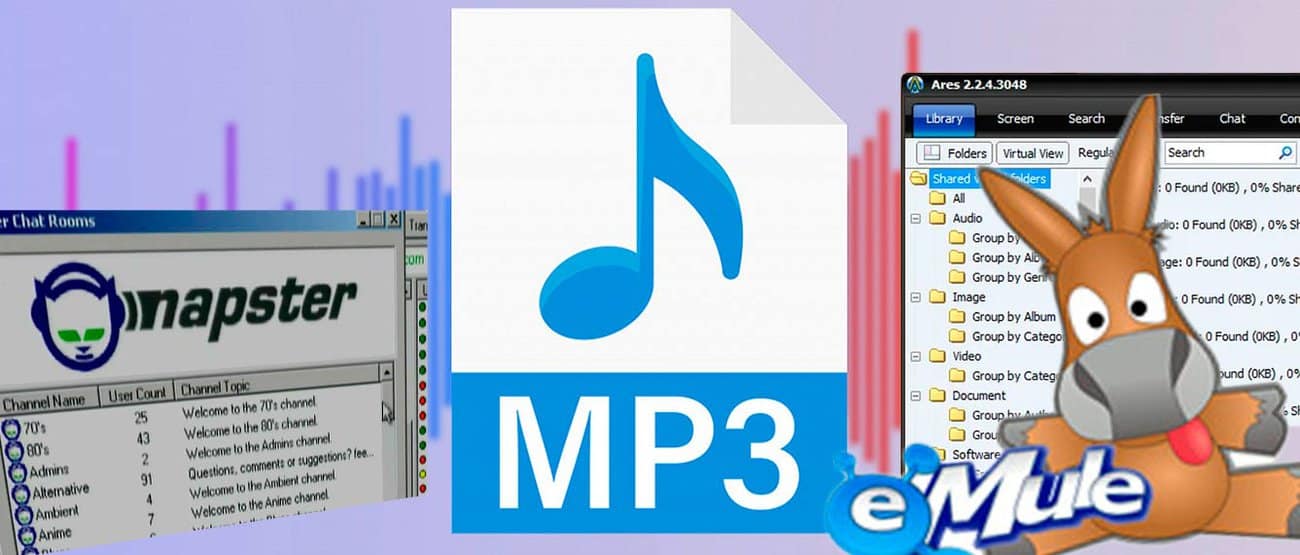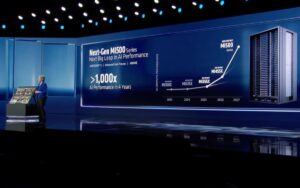
What the songs “Bring Me to Life”do Evanescence, “In The End“, do Linkin Park, e “Epitaph“, from Titãs, have in common? Well, here’s the thing for me: I downloaded them all using P2P software in the mid-2000s.
Do you remember these programs? They were a real sensation in a world still far from the ease of streaming platforms like Spotify that we have today. Names like Napster, Emule, Ares and Kazaa are among the most remembered P2P software that leveraged the practice of downloading files over the internet, at a time when many people (including me) were still trying to understand what the web, internet, dialers really were. , and what it meant to “be connected by surfing the net”.
At that time, many people didn’t even know that these downloads were illegal, considering the artists’ copyrights. The internet had an even greater context of “unrestricted browsing”, a kind of alternative world.
The dissemination of a decentralized network for content distribution gained enormous visibility with the Napster case.
Napster, the pioneer
Napster is fundamental to understanding the transformation of the internet in relation to the dissemination of content. The platform allowed access to a vast catalog of music for download. Created in 1999 by Shawn Fanning and Sean Parker, Napster was a pioneer in file sharing via P2P.
But what the hell is P2P? Let’s go for it!
P2P (Peer-to-Peer)

Peer to peer, P2P or peer to peer is a form of transmission in which participants act as clients and servers at the same time. There is no central server responsible for sharing. The idea is to strengthen the collaborative effect: whoever has the file shares it with others on the network, and Napster, as software, was that link.
You may be thinking: “Huh, isn’t that Torrent?” There are similarities, but in traditional P2P, file transmission occurs in full, from one point to another. In Torrent, files are fragmented and sent from different points on the network.
This characteristic of P2P generated frustrations. I, for example, was there with my AMD Sempron 2600+, CRT monitor, 256 MB of RAM and Windows XP, downloading from eMule, another P2P option. The file took hours to download, and suddenly, it was interrupted before completion. The other point on the network (that is, the computer I was downloading from) simply went offline. Maybe the person turned off the PC and went outside? Likely.
Napster x Metallica
Returning to Napster, it was hugely successful, especially in the United States. In 2000, it surpassed 30 million users, but also generated controversy. Metallica sued Napster alleging copyright infringement, and a demo “I Disappear”a track that was part of the soundtrack for the film Mission: Impossible 2, was leaked and played on radio stations. Guess where they got the song before its release? Napster.
At the time, the band claimed they were making a $10 million loss due to Naspter. Lars Ulrich, drummer for Metallica, even stated that the “exchanging music over the Internet was a kind of trafficking in stolen goods”.
The decision in the process generated a huge wave of criticism of Metallica, some bands even took a stance against the decision, such as Motley Crue. The famous litigation, which culminated in the closure of Napster in 2001, opened the true Pandora’s box of content dissemination on the internet. It is perfectly possible to state that the scope of piracy on the web is pre-Napster and post-Napster.
Post-Napster P2P software

I never used Napster, I only had contact with Emule, Ares and Kaaza. I also used Lime Wire for a short time. Software that maintained the philosophy of what Napster was at the beginning, and that began to appear on the internet around 2002/2003 (the year that another famous name in the world of downloads appeared, The Pirate Bay).
In addition to music, it was possible to download programs, films, files in general. In my case, I only downloaded songs. MP3 files that I put on my MP3 Player, which was a copy of the iPod Shuffle. Pirated music on a pirated player. And of course I also listened to the tracks on the PC, enjoying the animations in Windows Media Player.

Many of these tracks had haunting audio quality, but I didn’t care about that. Really different times.
Using these software was as common as accessing websites. It was something that was directly linked to the action of connecting.
The software had a simple interface, and how to use it was also very easy. In addition to the availability of the actual files, these programs were a veritable breeding ground for viruses. You thought you were downloading something and came across a not-so-pleasant surprise at the end.
The scope of everything I reported here is directly proportional to your age. If you are over 30 years old, you understand perfectly the phenomena that these programs were, disseminated at a time when we worried about how long we stayed connected to the internet for fear of the amount that would come from the telephone bill.
Source: https://www.hardware.com.br/artigos/napster-emule-e-ares-relembrando-o-boom-do-compartilhamento-de-mp3-e-de-muitos-virus-na-internet/


